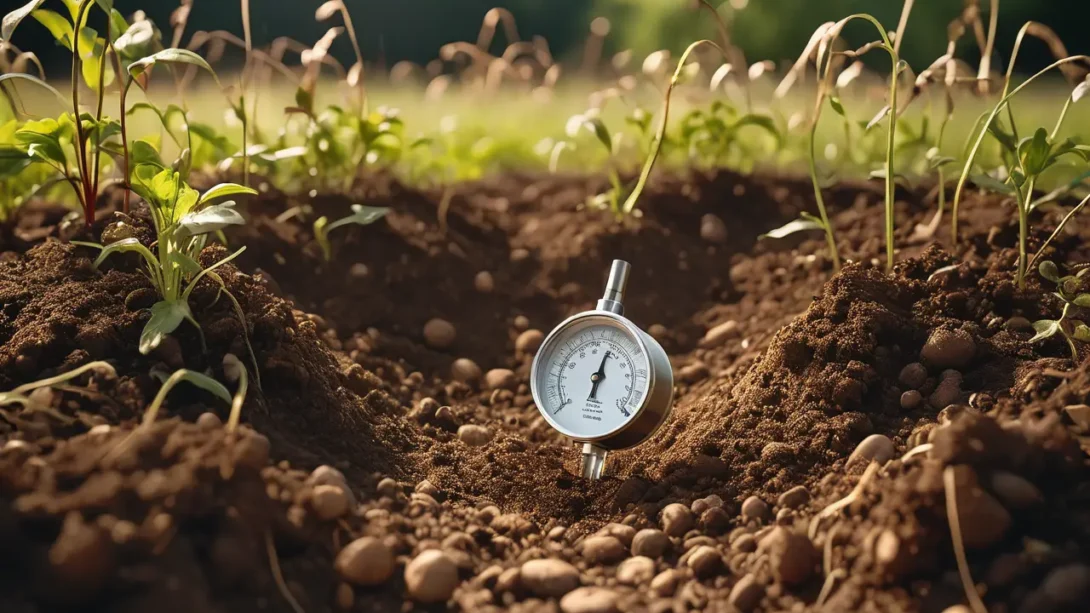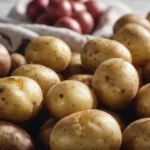Soil temperature plays a crucial role in the success of gardening and agriculture, yet it’s often overlooked by hobbyists and even some professionals. Understanding and monitoring soil temperature is vital for optimizing seed germination, plant growth, and overall health. This article will explore the significance of soil temperature, the tools available for measuring it, and provide a step-by-step guide to ensure accurate readings.
Soil Temperature
Soil temperature significantly influences a plant’s ability to germinate, grow, and thrive. Different plants require different temperature ranges for optimal growth. For instance, cool-season vegetables like lettuce and spinach can germinate in cooler soil, whereas warm-season crops such as tomatoes and peppers need warmer soil to start their life cycle successfully.
Unlike air temperature, which can fluctuate widely within a single day, soil temperature changes more gradually. It also varies with depth; the surface may be cool in the morning, but just a few inches down, the temperature can be significantly warmer. Understanding these variations is crucial for timing planting and other gardening activities.
Tools for Measuring Soil Temperature
To accurately measure soil temperature, you need the right tools. Here are the most common types:
- Soil Thermometers: These can be analog or digital and are specifically designed for inserting into the soil. Digital models may offer more precise readings and quicker response times.
- Probe Thermometers: These thermometers have a long probe that can measure temperature at various depths, making them ideal for getting a comprehensive view of the soil’s condition.
- Soil Temperature Sensors: Part of more advanced or automated gardening systems, these sensors can provide continuous soil temperature data, which is particularly useful for commercial agriculture or research purposes.
Each tool has its advantages and limitations, from the simplicity and affordability of basic soil thermometers to the sophisticated data collection capabilities of automated sensors.
Preparing to Measure Soil Temperature
Before taking measurements, consider the following to ensure accuracy:
- Time of Day: Early morning or late afternoon is the best time to measure soil temperature, as midday readings can be skewed by the sun’s heat.
- Depth: Most seeds are planted at a depth of about 1-3 inches. Measuring soil temperature at this depth gives the most relevant information for germination. However, for perennials or trees, you might need to measure deeper.
- Measurement Points: In larger gardens or fields, it’s important to take readings from multiple locations to account for variations in sunlight, shade, and soil composition.
The initial understanding of soil temperature’s importance and the preparation required for accurate measurement sets the stage for effectively monitoring and responding to the needs of your garden or farm. With the right tools and techniques, you can ensure that your plants have the best possible environment for growth.
Step-by-Step Guide to Measuring Soil Temperature
To accurately measure the soil temperature and provide the best conditions for your plants, follow this detailed guide:
- Choosing the Location: Select areas that are representative of where you plan to plant. For a more comprehensive understanding, choose multiple locations across your garden or farm, especially if there are variations in sunlight, elevation, or soil type.
- Inserting the Thermometer: For standard soil thermometers or probes, gently insert the device into the soil at the depth relevant to your planting needs. For most annual vegetables and flowers, a depth of 2-3 inches is appropriate. Ensure the thermometer is inserted vertically to get an accurate reading of that depth.
- Waiting Period: Allow the thermometer to acclimate to the soil temperature. This usually takes about 3-5 minutes for digital thermometers and up to 10 minutes for analog models. Patience during this step ensures the readings you get reflect the actual soil temperature, not the air temperature or the temperature of the thermometer itself when inserted.
- Recording the Temperature: Once the thermometer has stabilized, record the temperature. If you’re taking multiple readings across different locations or depths, log each measurement carefully, noting the specific location and depth for future reference.
- Interpreting Results: Compare your readings to the optimal soil temperature ranges for the plants you wish to grow. This information can often be found on seed packets or in gardening guides. If the soil is too cold, you may need to wait before planting or consider using techniques to warm the soil. Conversely, if the soil is too warm for cool-season crops, you might need to provide shade or wait for cooler conditions.
Tips for Accurate Soil Temperature Measurement
To ensure the reliability of your soil temperature readings, keep these best practices in mind:
- Maintain Your Thermometer: Regularly clean your soil thermometer, especially the probe, to ensure it provides accurate readings. Calibration may also be necessary for digital thermometers according to the manufacturer’s instructions.
- Avoid Common Pitfalls: Don’t take readings too soon after watering, as this can temporarily alter the soil temperature. Similarly, avoid measuring in areas directly affected by recent solar exposure or shading anomalies unless these conditions reflect where you plan to plant.
- Consistency is Key: Try to take your readings at the same time of day and under similar weather conditions to reduce variability in your data. This consistency will help you track changes more accurately over time.
By following these steps and considerations, you can accurately assess the soil temperature in your garden or farm. This information is invaluable for optimizing planting times and ensuring that your plants have the best possible start. With precise soil temperature measurements, gardeners and farmers can make informed decisions that lead to healthier plants and more abundant harvests.
Using Soil Temperature Data
Once you have accurate soil temperature measurements, you can use this data to inform your gardening or farming practices. Here’s how to apply your findings:
- Adjust Planting Schedules: Align your planting times with the soil temperature requirements of different seeds or plants. This ensures that conditions are optimal for germination and root development, leading to stronger, healthier plants.
- Manage Irrigation: Understanding soil temperature can help you adjust your watering schedule. Warmer soil may necessitate more frequent watering to prevent stress on plants, whereas cooler soil retains moisture longer.
- Fertilization Timing: Soil temperature affects microbial activity and, consequently, nutrient availability. By monitoring soil temperature, you can better time the application of fertilizers to coincide with periods of high nutrient uptake by plants.
- Soil Temperature Modification: If your soil temperature is not ideal for your plants, consider methods to adjust it. For cold soils, black plastic mulch or floating row covers can capture solar heat, raising soil temperature. Conversely, organic mulches like straw can help cool the soil in excessively hot conditions.
Advanced Techniques and Tools
For those interested in more sophisticated monitoring, advanced tools and techniques can provide a wealth of data:
- Wireless Sensors and Data Loggers: These devices can continuously monitor soil temperature at various depths, offering real-time insights and trends. Some systems can even alert you to significant changes in soil temperature, allowing for prompt action.
- Thermal Imaging: In large-scale operations, thermal imaging from drones or satellites can map soil temperature across vast areas. This technology helps identify microclimates and areas of concern that may require special attention.
Conclusion
Measuring soil temperature is a fundamental aspect of successful gardening and farming. By taking the time to accurately measure and monitor soil temperature, you can make informed decisions that significantly impact plant health and productivity. Whether you’re a hobbyist gardener or a professional farmer, integrating soil temperature data into your planting and maintenance schedules can lead to more vigorous growth and abundant harvests.
Remember, the tools and methods you choose should match your gardening needs and budget. From simple thermometers to advanced monitoring systems, the key is consistency in measurement and responsiveness to the data collected. By understanding and adapting to the needs of your plants in relation to soil temperature, you’re setting the stage for a thriving garden or farm.




